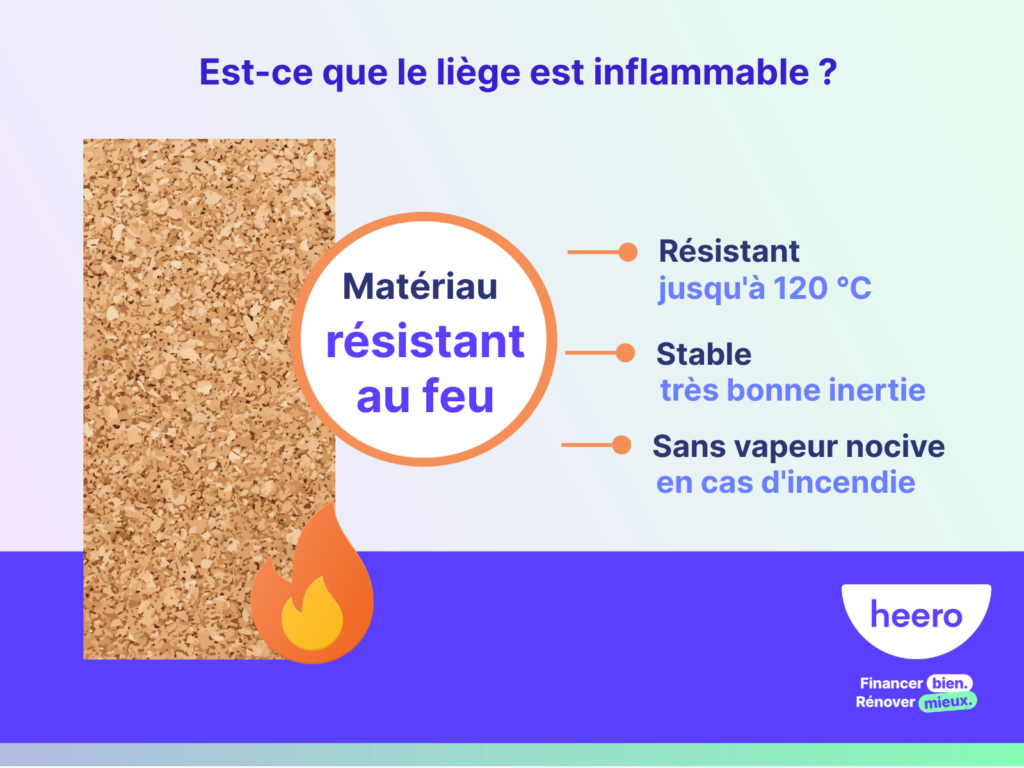Aggregate cork is an ecological building material with many advantages. Thanks to its lightness, impact resistance and thermal and acoustic insulation properties, it is increasingly used in sustainable construction projects. However, it also has a number of disadvantages, such as higher cost and low water resistance.
Where to find the right NATURAL MATERIALS for ECOLOGICAL RENOVATION?
[arve url="https://www.youtube.com/embed/b3E_R9Flae8″/]
What are the disadvantages of cork?
Cork has certain disadvantages in certain contexts. Here are the main limitations associated with the use of cork:
1. Scarce natural resources : Cork is mainly produced from the bark of the cork oak (Quercus suber), which only grows in certain Mediterranean regions, notably Portugal, Spain and Algeria. This means that the availability of cork is limited, and it can be more expensive than other packaging or construction materials.
2. Fragility : Although cork is a naturally soft and resilient material, it can be easily damaged if subjected to excessive stress. Consequently, it may not be suitable for certain uses where higher mechanical strength is required.
3. Permeability : Cork is a porous material, which means it can be permeable to liquids and gases. This can be a disadvantage in certain applications, for example when used to seal wine bottles. In such cases, additional coatings or alternative materials must be used to ensure watertightness.
4. Limited durability : Although cork is biodegradable and compostable, its lifespan is generally not as long as that of some synthetic materials. This may require more frequent replacement, which can be costly and have a higher environmental impact.
In conclusion, although cork offers advantages in terms of durability, lightness and moisture resistance, it is important to consider these potential drawbacks when using it in specific applications.
Does cork absorb moisture?
Yes, cork has the capacity toabsorb moisture. This is due to its unique cell structure composed of small air-filled cells. This structure enables cork to capture and retain water. As a result, cork can help to regulate humidity in various applications.
In the field of insulationFor example, cork panels are used for absorb moisture and maintain a dry, comfortable environment. Cork is also often used in the creation of wine bottle corksbecause it allowsabsorb excess moisture and keep the wine fresh.
What's more, cork also has the following properties anti-humidity. It is resistant to mildew and rot, making it ideal for damp areas such as bathrooms and kitchens.
In short, cork is a versatile material that can be used for absorb moisture and help maintain a dry, healthy environment. Its ability to regulate humidity makes it a popular choice in many areas.
What thickness of cork should I use for insulation?
What thickness of cork should I use for insulation?
The thickness of cork needed for insulation depends on a number of factors, such as the type of building, the surrounding climate and the insulation standards required.
In general, for effective thermal insulation, cork panels with a minimum thickness of 4 cm are recommended. However, this thickness can vary according to various factors.
For acoustic insulation, a minimum thickness of 2 cm of cork is often sufficient, but a greater thickness may be necessary if you wish to achieve more effective soundproofing.
It's important to consult an insulation professional to determine the exact cork thickness required for your specific project. They will be able to take into account all relevant elements and provide you with the appropriate recommendations.
In all cases, it's essential to comply with the insulation standards in force in your region to ensure proper insulation and maximize energy savings.
Does cork insulate against heat?
Yes, the cork is known as an excellent thermal insulator. Its unique cellular structure gives it exceptional insulating properties. In fact, the air cells trapped in cork act as thermal barriers, slowing the spread of heat.
As a result, cork is used in many areas of thermal insulation, such as building construction, floor coverings and insulation materials for air conditioning and heating systems.
In addition to its effectiveness as a thermal insulator, cork offers other advantages. It is naturally resistant to moisture and mold, making it an ideal choice for damp environments or those prone to water infiltration. What's more, it's lightweight, durable and environmentally friendly, as it's mainly made from the bark of the cork oak tree, without the need to cut down the tree.
In conclusion, the cork is therefore a highly effective thermal insulation material, offering numerous advantages for construction, heating and air-conditioning systems.
In conclusion, granulated cork offers many advantages. Firstly, its lightness and insulating power make it ideal for thermal and acoustic insulation. What's more, its natural, renewable composition makes it an environmentally-friendly option.
In additionBut cork aggregate also has its limitations. It can be more expensive than other insulation materials, which may deter some homeowners. What's more, its durability can vary with use and maintenance.
HoweverDespite these drawbacks, cork granulate remains an interesting option for those looking for excellent insulation and who wish to contribute to environmental protection.
All in allCork aggregate offers many advantages in terms of insulation and durability, while being environmentally friendly. The specific needs of each project must therefore be assessed to determine whether this is the most suitable option.








